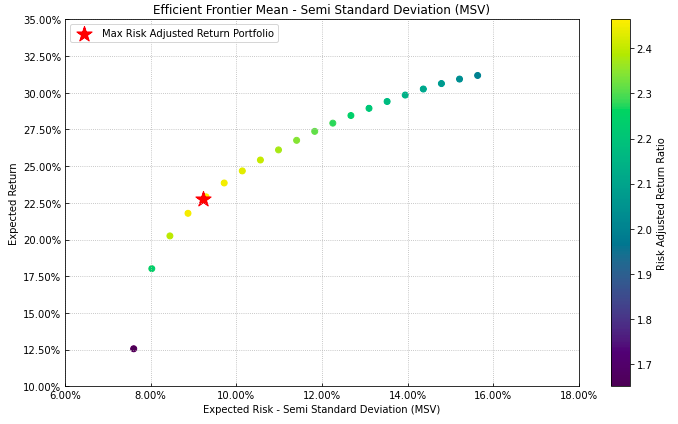tf_alloc
Simpliying GPU allocation for Tensorflow
- Developer: korkite (Junseo Ko)
Installation
pip install tf-alloc
⭐️
Why tf_alloc? Problems?
- Compare to pytorch, tensorflow allocate all GPU memory to single training.
- However, it is too much waste because, some training does not use whole GPU memory.
- To solve this problem, TF engineers use two methods.
- Limit to use only single GPU
- Limit the use of only a certain percentage of GPUs.
- However, these methods require complex code and memory management.
⭐️
Why tf_alloc? How to solve?
tf_alloc simplfy and automate GPU allocation using two methods.
⭐️
How to allocate?
- Before using tf_alloc, you have to install tensorflow fits for your environment.
- This library does not install specific tensorflow version.
# On the top of the code
from tf_alloc import allocate as talloc
talloc(gpu=1, percentage=0.5)
import tensorflow as tf
""" your code"""
It is only code for allocating GPU in certain percentage.
Parameters:
- gpu = which gpu you want to use (if you have two gpu than [0, 1] is possible)
- percentage = the percentage of memory usage on single gpu. 1.0 for maximum use.
⭐️
Additional Function.
GET GPU Objects
gpu_objs = get_gpu_objects()
- To use this code, you can get gpu objects that contains gpu information.
- You can set GPU backend by using this function.
GET CURRENT STATE
Defualt
current(
gpu_id = False,
total_memory=False,
used = False,
free = False,
percentage_of_use = False,
percentage_of_free = False,
)
- You can use this functions to see current GPU state and possible maximum allocation percentage.
- Without any parameters, than it only visualize possible maximum allocation percentage.
- It is cmd line visualizer. It doesn't return values.
Parameters
- gpu_id = visualize the gpu id number
- total_memory = visualize the total memory of GPU
- used = visualize the used memory of GPU
- free = visualize the free memory of GPU
- percentage_of_used = visualize the percentage of used memory of GPU
- percentage_of_free = visualize the percentage of free memory of GPU
한국어는 간단하게!
설치
pip install tf-alloc
문제정의:
- 텐서플로우는 파이토치와 다르게 훈련시 GPU를 전부 할당해버립니다.
- 그러나 실제로 GPU를 모두 사용하지 않기 때문에 큰 낭비가 발생합니다.
- 이를 막기 위해 두가지 방법이 사용되는데
- GPU를 1개만 쓰도록 제한하기
- GPU에서 특정 메모리만큼만 사용하도록 제한하기
- 이 두가지 입니다. 그러나 이 방법을 위해선 복잡한 코드와 메모리 관리가 필요합니다.
해결책:
- 이것을 해결하기 위해 자동으로 몇번 GPU를 얼만큼만 할당할지 정해주는 코드를 만들었습니다.
- 함수 하나만 사용하면 됩니다.
# On the top of the code
from tf_alloc import allocate as talloc
talloc(gpu=1, percentage=0.5)
import tensorflow as tf
""" your code"""
- 맨위에 tf_alloc에서 allocate함수를 불러다가 gpu파라미터와 percentage 파라미터를 주어 호출합니다.
- 그러면 자동으로 몇번의 GPU를 얼만큼의 비율로 사용할지 정해서 할당합니다.
- 매우 쉽습니다.
파라미터 설명
-
gpu = 몇범 GPU를 쓸 것인지 GPU의 아이디를 넣어줍니다. (만약 gpu가 2개 있다면 0, 1 이 아이디가 됩니다.)
-
percentage = 선택한 GPU를 몇의 비율로 쓸건지 정해줍니다. (1.0을 넣으면 해당 GPU를 전부 씁니다)
-
만약 percentage가 몇인지 모른다면 0에서 1 사이의 값을 넣어서 할당해보면 최대 사용가능량이 얼만큼이라고 에러를 출력하니까 걱정없이 사용하시면 됩니다. 다른 훈련에 방해를 주지 않기 때문에, nvidia-smi를 쳐가면서 할당을 하는 것보다 매우 안정적입니다.
-
핵심기능만 한국어로 써 놓았고, 다른 기능은 영문버전을 확인해보시면 감사하겠습니다.




